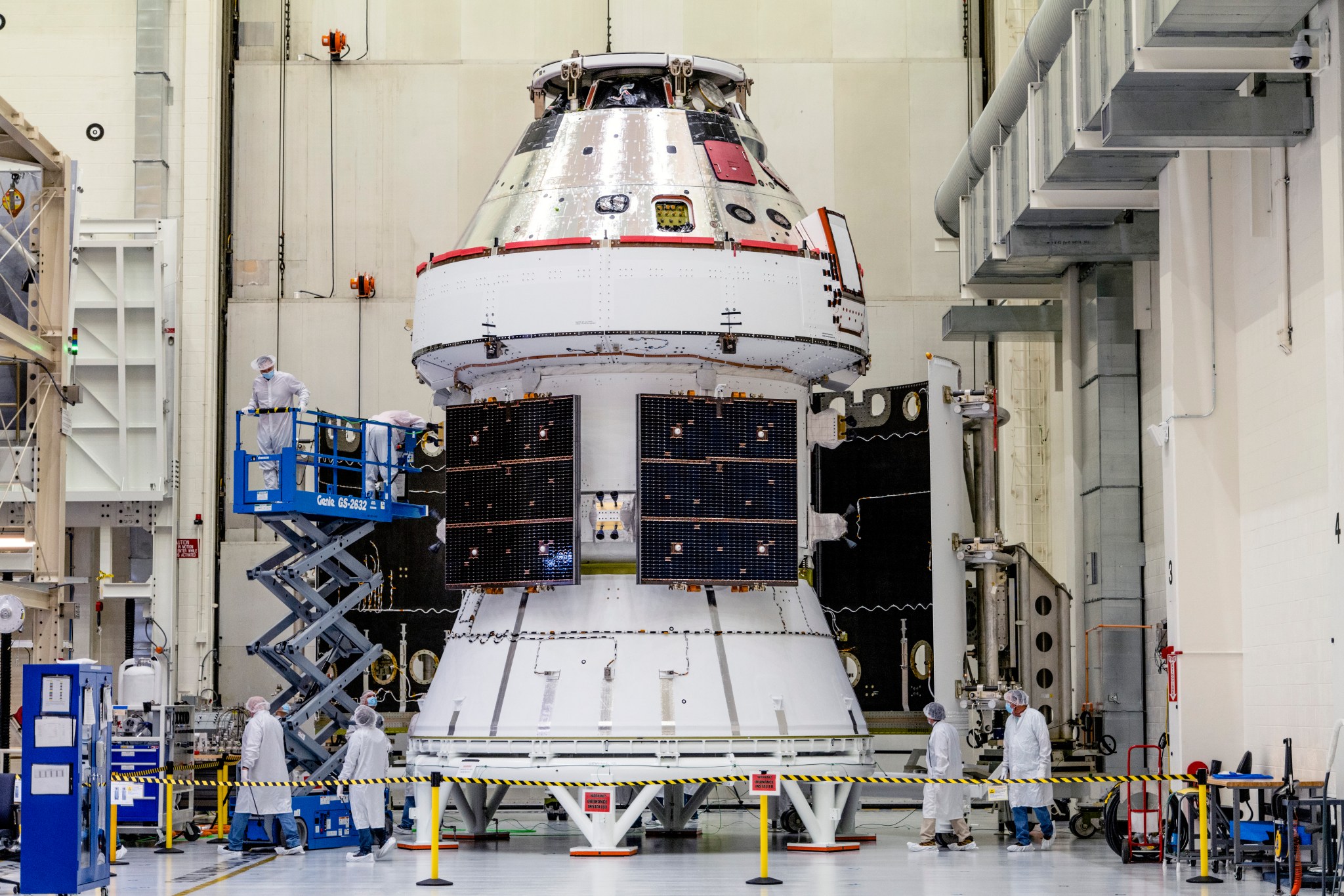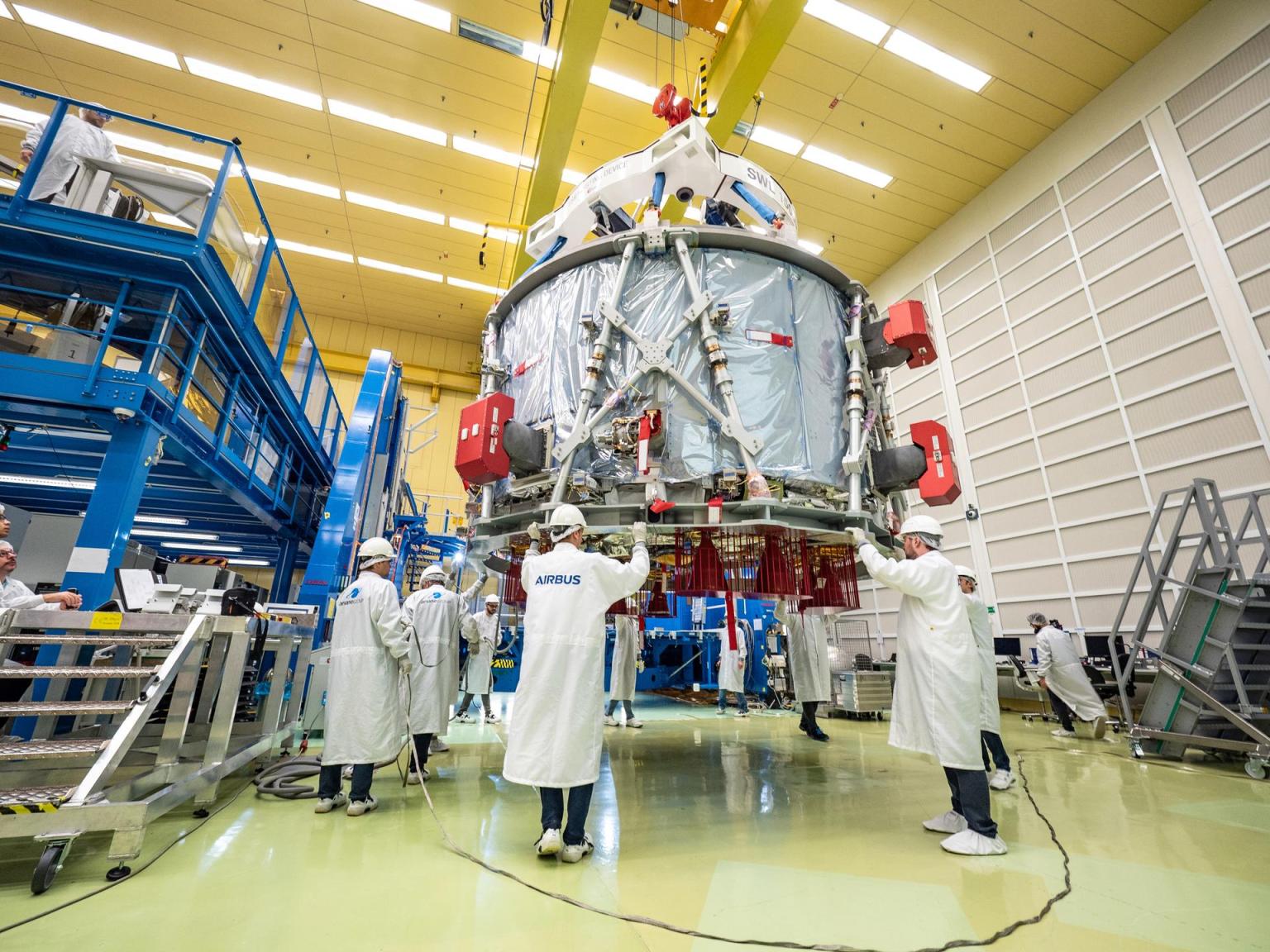NASA’s Orion spacecraft is built to take humans farther into space than ever before. A critical component of the Artemis missions, Orion will carry the crew, provide emergency abort capability and life support systems for astronauts, and return them home safely.
To build this advanced spacecraft, NASA is working with industry partners including Orion’s lead contractor, Lockheed Martin, and ESA (European Space Agency), which oversees the development of Orion’s service module. These partnerships will play a key role in achieving Artemis goals and establishing a safe, peaceful, and prosperous future in space.
Previously, NASA highlighted members of the workforce who contribute to Orion’s launch abort system and crew module. International team members also work on Orion’s European Service Module, the powerhouse that fuels and propels the spacecraft.
Keep Pushing: The European Service Module

Connected to the base of the crew module, Orion’s European Service Module provides propulsion, thermal control, electrical power generated by solar arrays, and life support systems for the crew including water, oxygen, and nitrogen. The service module is built by ESA lead contractor Airbus. Companies in the U.S. and 10 European countries supply its components.
Airbus subcontractor Thales Alenia Space in Italy develops and supplies critical systems for the service module, including structure and micrometeoroid protection, thermal control, and consumable storage and distribution.
Federica Negri is a thermal and environmental control engineer at Thales Alenia Space in her hometown Turin, Italy. Negri earned her master’s degree in mathematical engineering from the Polytechnic University of Turin and started on her aerospace path as an intern for Thales Alenia Space.
Today, she’s responsible for obtaining equipment for the service module, such as the gas tanks that store oxygen for breathing, and nitrogen that also helps maintain pressure in the crew module. Like many engineers, her work can be quite complex.
“When my job becomes challenging, I often think to its final purpose, and that’s the impact of Orion bringing the first woman to the Moon,” Negri said. “This event will become part of our collective memory, and it will be a huge step to empower women and inspire the girls of today who want to pursue a career in science fields.”
The Artemis missions are helping many people to pursue their dreams. Dragoș-Alexandru Păun, a propulsion engineer for subcontractor ArianeGroup in Bremen, Germany, is working on the propulsion subsystem of the service module.
“Being a ‘rocket scientist’ may feel impossible and intimidating, as it once did to me, but it’s the most exciting, fulfilling, and important work I could imagine doing,” said Păun, who grew up in Brașov, a city in the Transylvania region of Romania.
“Early on I was inspired by the long history my city has in aeronautics,” Păun said. “Brașov is the birthplace of Romanian cosmonaut Dumitru Prunariu and is also very close to the city of Sibiu, the birthplace of Hermann Oberth, one of the founding fathers of rocketry.”
Both were huge inspirations for Păun, who went on to receive his engineer’s degree from Transylvania University in Brașov and his master’s in space exploration and development systems from the Polytechnic University of Turin – ISAE-Supaero Toulouse. Now, he’s responsible for the development, testing, and integration of several major propulsion components, including engines.
“Dream big,” Păun said. “There’s nothing keeping you from achieving your dreams, but the real challenge is to pick one goal and stick with it, no matter what. Whether you’re interested in engineering or a scientific discipline, the world of space can offer priceless rewards to the curious mind.”
Learn more about NASA’s Orion spacecraft and the people behind it at: https://www.nasa.gov/exploration/systems/orion/index.html

























